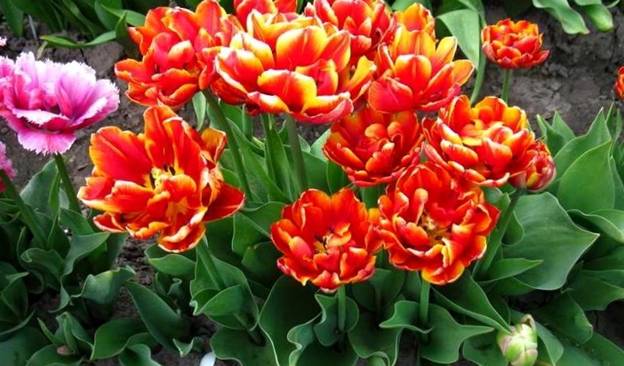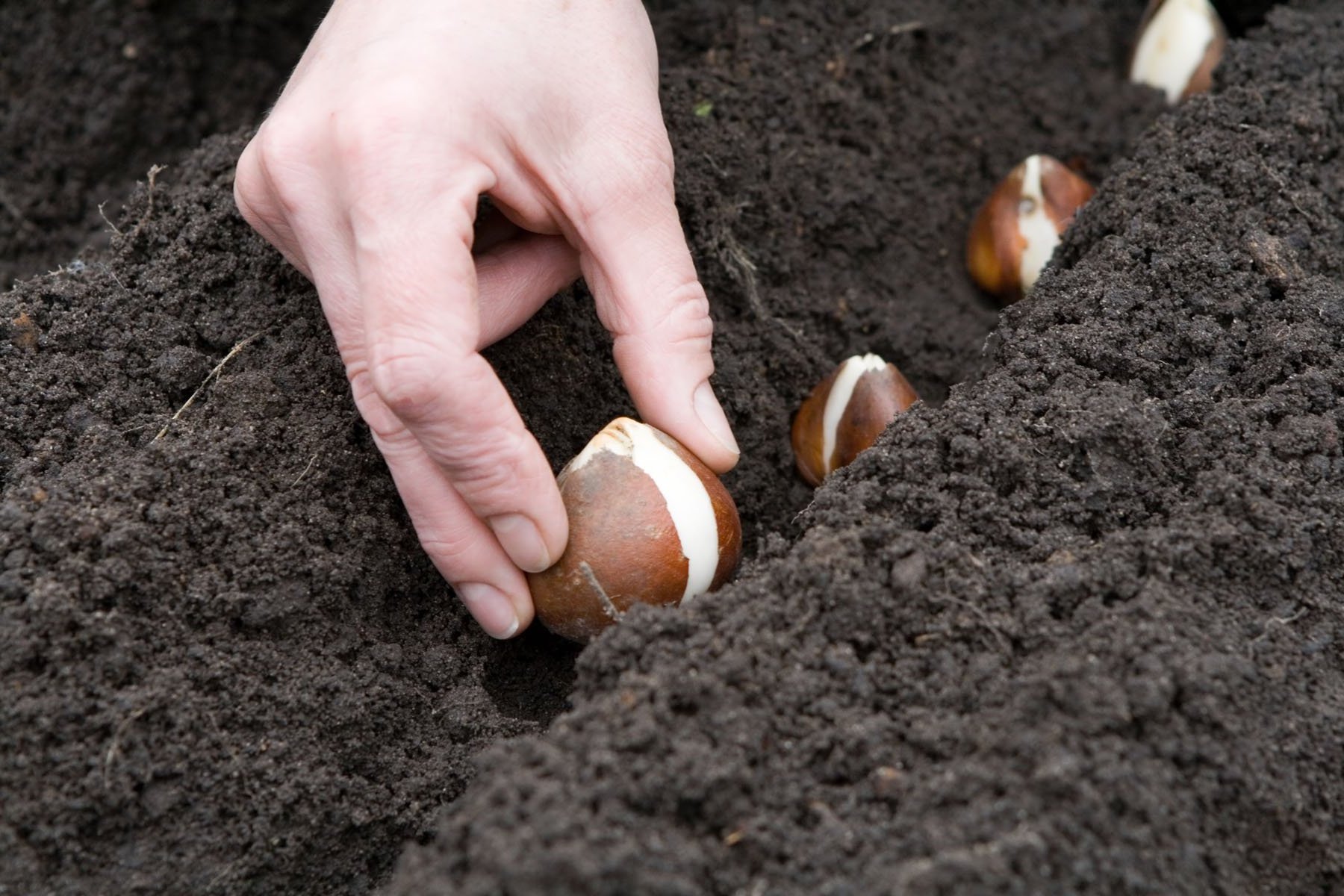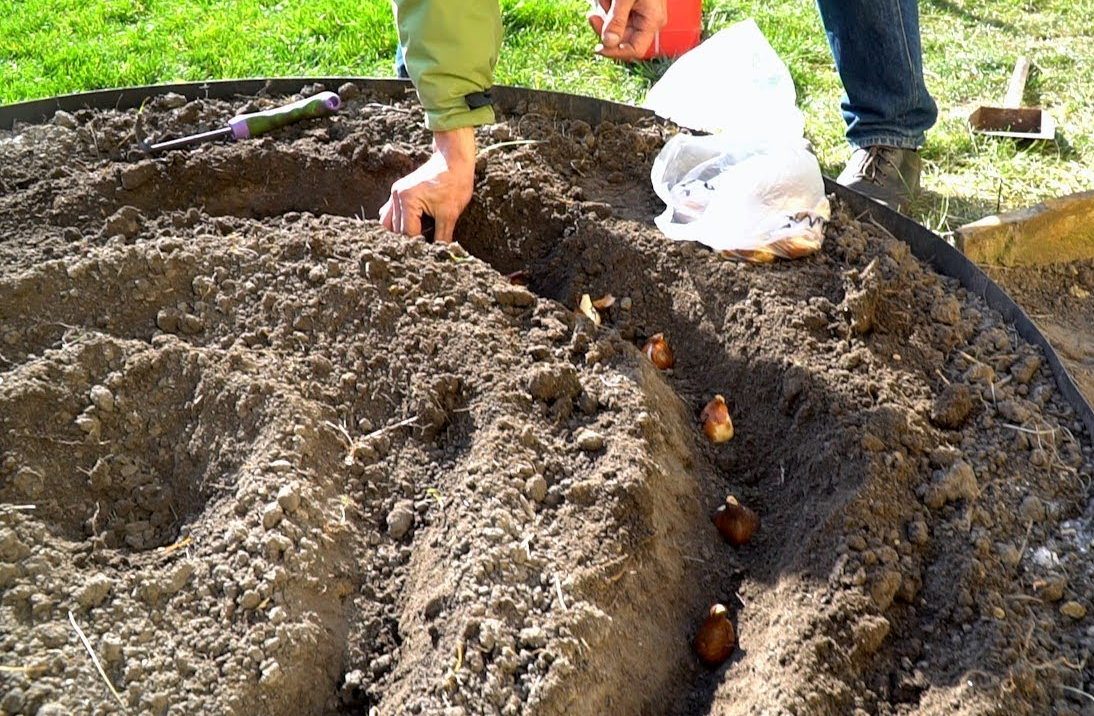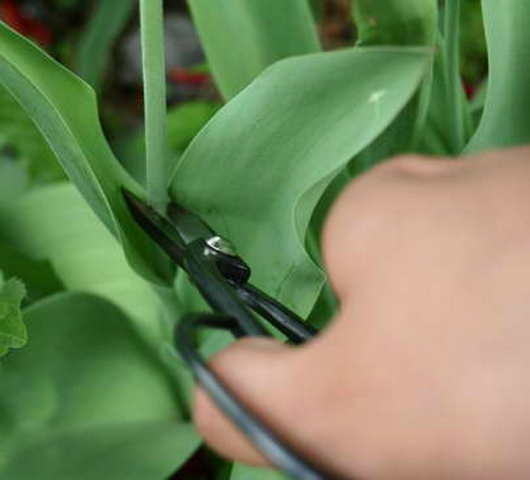Content:
Tulips are especially popular among the Liliaceae family of perennial bulbous flowers. They are grown both on an industrial scale and in small quantities on personal plots. But you need to know when to plant tulips in the fall, so that next spring they will please with their flowering.
Planting time
Tulips are always planted in autumn. When and how to plant, weather conditions, namely temperature conditions, affect. It is very important to choose the most optimal period for further flowering. The disembarkation should be carried out a month and a half before the onset of stable cold weather. Soil temperature should not be below 8-10 ° С, air temperature - below 5 ° С. To find out, you can use meteorological information or a depth thermometer.
Already in the fall, tulips will take root, a peduncle and leaves are laid in them, at a temperature of 0-10 ° C, vegetation will take place. In the spring, after the snow melts, the bulbs will begin to grow actively.
Preparatory work before disembarking
Tulip bulbs should be planted in the soil for the winter, when the soil and planting material have been prepared.
Preparing the bulbs
A flower infected with a fungus or infection, planted in a common flower bed, can lead to the death of all plants. Therefore, an important condition before planting tulip bulbs is their pre-treatment. Actions required for preparation:
- Examine each specimen carefully for damage, signs of decay and disease. A dense and dry bottom is a guarantee of vitality and health. Remove untested bulbs from the bulk.
- Sort by size, separating small onions from large ones. This is necessary so that later it would be easier to select material for storage and further planting.
- Get rid of the husk with gentle movements so that the plant absorbs nutrients from the soil and top dressing better and faster.
- Disinfect in a solution of potassium permanganate of low concentration for half an hour to prevent the formation of fungus. After that, you should immediately start landing. Instead of a solution, you can use the acquired special tools: healthy earth, vitaros, maxim, foundationol.
Soil preparation
In addition to the bulbs, you should prepare the soil in which the tulips will be planted. It is worth giving preference to loamy or sandy loam soil with a high proportion of humus. An excellent option is a loose soil of high fertility, neutral acidity with a groundwater level of at least 75 cm.
If the groundwater lies closer to the roots, in order to avoid rotting due to high humidity, care should be taken to create drainage. To do this, you can use the tools at hand: coarse sand, expanded clay or gravel.
Too clay soil should be diluted with a little peat and sand. Sandy soil is not ideal for tulips. Due to its rapid drying out, the flowers will experience a constant lack of moisture, which will negatively affect the appearance of the plant or even destroy it.
You can get rid of high acidity by resorting to liming. Poor in useful substances and heavy soil should be fertilized with compost, ash or purchased ready-made fertilizer complexes.
Humus and wood ash are a great tandem for bulbous flowers. 2-3 buckets of humus and about 200 g of wood ash are added to the square of the substrate, poor in useful microelements.
Dolomite flour can be added to replenish magnesium. Crushed chalk or grated egg shells will help increase the calcium content. Boron will replace boric acid, zinc - zinc sulfate.
Careful attention should be paid to the selection of a place where tulips will be grown. This should be a sunny area (in the shade, the plant blooms much worse), without drafts, with a good outflow of water after rain or melting snow.
Before planting, you should rid the selected area of weeds and roots. Avgust Roundup, a universal weed control agent, will help remove unwanted greens.
10-14 days before planting, the earth should be dug to a depth of 30 cm. Within 2 weeks it will be compacted, settle, but by the time of planting it will be still porous and moisture-absorbing.
Planting tulips in autumn: when and how to plant
Upon completion of the preparation, the moment comes when you can plant tulips in open ground in the fall. In this case, you should adhere to some recommendations.
The rows should be done at a distance of about 0.3 m from each other. Leave at least 0.1-0.15 m between large bulbs, about 0.05 m between small ones.
The depth of the hole should be 3 times the length of the bulb, this will ensure the tulip's survival in severe frosts. Size parameters:
- large specimens are planted at a depth of 0.15 m;
- medium - by 0.12-0.13 m;
- small - 0.05-0.1 m.
The bulbs are laid out in the holes with the bottom to the bottom, slightly pressing into the ground. At the same time, movements should be as accurate as possible so as not to damage the roots. A small layer of earth is poured on top. It should be carefully leveled so that water does not accumulate in the holes and depressions during rains.
After planting, you need to water the grooves abundantly so that the moisture reaches the bulbs.
Rodents love to feast on bulbs, therefore, before planting, you need to treat the bottom with a pharmaceutical preparation - Vishnevsky ointment or use birch tar.
Growing in a container has become quite popular lately. This method has many advantages:
- Mobility. The box can be moved to any corner of the garden.
- Lack of risks. After the tulips have bloomed, you can easily dig up the bulbs without the likelihood of damage, because, as you know, their location.
- Protection. Portable containers provide protection against rodent attacks and the spread of disease from other plants.
- Convenience. As a container, you can use any available means: basins, buckets, flowerpots, pots, boxes, baskets.
- Way out. If the site is poor on fertile land, then planting in a pot filled with purchased earthen mixture is an excellent solution to the situation.
When grown in a container, a good drainage should be established to allow water to drain out after rains. For the winter, it should be buried in the ground or compost, or placed in an unheated garage or shed.
Tulips look great next to nasturtium, scented tobacco, forget-me-not, daisy, viola.
To answer the question: when can tulips be planted before winter, many gardeners use the lunar calendar.
Landing depending on the region
| Region | Disembarkation period |
|---|---|
| Moscow climate, Moscow region and adjacent territories | September 10 - October 5 |
| Saint Petersburg and Leningrad region | September 15-30 |
| South of the Middle Lane | September 25 - October 15 |
| Southern latitudes | October 25 - November 15 |
| South of Siberia | September 20-30 |
| Siberia, Middle latitudes | August 20 - September 10 |
| Far East | September 15-25 |
| Middle latitudes of the Urals | September 10-20 |
| South of the Urals | September 20 - October 10 |
Follow-up care
In wet autumn weather, the planting material does not need additional watering. In dry, arid climates, water should be used. To know for sure if moisture is required, you need to dig a small hole near the landing site. If the soil in it is dry, a lump does not form when compressed, then the future plant needs watering.
Tulips are resistant to cold, so they do not need covering for the winter. Otherwise, they will grow ahead of time, overwinter badly and will bloom their buds much later. But in regions with extremely cold winters, you should take care of mulching. As a shelter, you can use sawdust, coniferous spruce branches, fallen dry leaves.
The soil tends to crack, as a result of which an influx of cold air flows to the bulbs, and the most unbearable specimens may die. Snow prevents cracking. Therefore, in order to grow beautiful flowers, the thin snow cover should be increased by shoveling snow from the adjacent territory onto the beds.
Tulips are perhaps the most common early bulbous flowers. It is difficult to imagine spring without these variegated and multi-colored plants: terry, fringed, peony, parrot, lily flowers. But, so that with the departure of winter, the flower beds are illuminated with bright flowering, you should adhere to the recommendations for preparation and planting. Having completed the simple manipulations described above, you can acquire a beautiful garden decoration for many years.

















